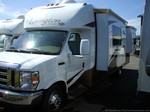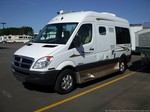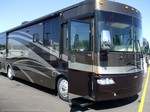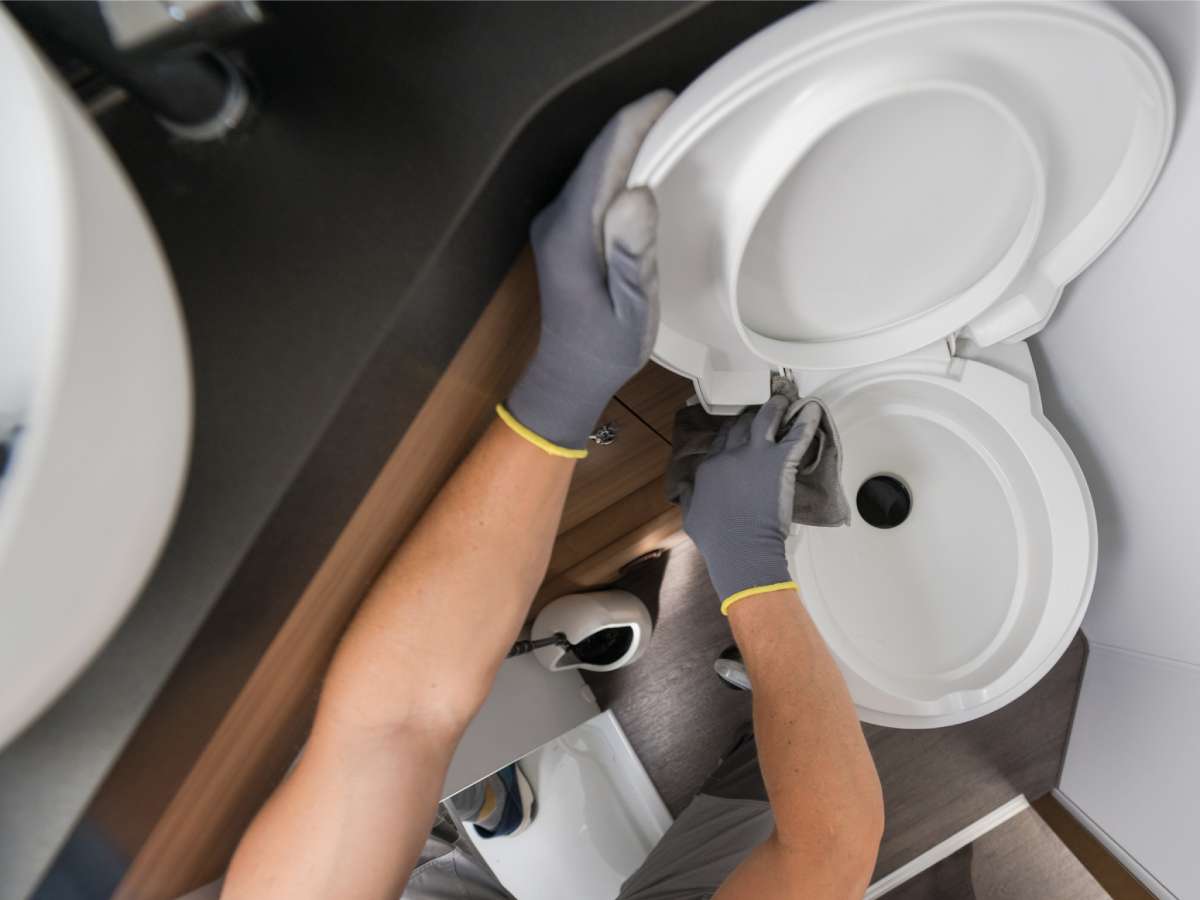If you haven’t had much exposure to the RV lifestyle before, then you’re probably wondering what Class A, B, and C are all about.
Is one type of RV any better than the other?
What are the advantages and disadvantages of one over the other?
With so much money involved in purchasing an RV, you sure don’t want to make a mistake your first time out!
As a primer of sorts, this article describes the different classes of RVs and how one may suit your needs better than another…
Class A Motorhomes
If it’s big, square & boxy, and looks similar to a transit bus, then it’s a Class A motorhome. With their picture window windshield, you get a view above the traffic that’s of panoramic quality.
These RVs start in price around $75,000 and go well into the millions of dollars. Considered the most luxurious of all RVs, they often have more amenities than many top-of-the-line McMansion homes.
Some are luxury coaches (or bus conversions) designed for use by private individuals. At the very top end of the scale is the Class A diesel motorcoach (or diesel pusher). They start in price around $100,000 and go well into the millions.
The list of Class A manufacturers is long.
A few of the best things about Class A motorhomes:
- Class A RVs can be as long as 45 feet. With all of this space inside, they’re usually equipped with a rear master suite including a full bathroom with a glass-enclosed shower. The water closet may be in its own separate room, and there’s probably a washer/dryer unit on board to handle the laundry.
- Today’s Class A motorhomes tend to have multiple slideouts. Some can expand to a width of over 14 feet. Large flat screen HDTV’s, surround sound systems, even dishwashers and ice machines are common options. The list of upgrades and options is almost endless.
- Basement storage can swallow enough supplies to keep you on the road permanently. These are great traveling machines that let you drive comfortably all day and sleep comfortably all night so you can get up the next morning to do it all over again.
There’s a downside to everything though:
- For Class A RVs, fuel economy is a big one. With their boxy and large profile, you’ll be spending big dollars to keep a Class A motorhome rolling down the highway.
- Once you get to your destination and set up camp, you’re pretty much stuck there. Unless you tow a car for local transportation, you’ll be staying put at camp. That is unless you want to put everything away, roll up the awning, and suck in the slideouts so you can motor on down the road again.
- If you’re timid about driving something this large, keep in mind that close area maneuvering is a learned skill.
- My wife could never get over the idea of having a steering wheel in the living room when we lived full time in a 37-foot Bounder motorhome. Being new to the RV lifestyle at the time, it just didn’t feel like house living to her.
Class C Motorhomes
 Since moving down to the next smaller sized RV seems logical, the next in our lineup is the Class C motorhome.
Since moving down to the next smaller sized RV seems logical, the next in our lineup is the Class C motorhome.
These vehicles make use of a standard cargo van as the driving portion of the RV — Ford Econoline and Chevrolet Express being the most common. This provides better access to the cab portion from the outside, since there are entry doors on both sides.
The house (or camper) portion of the RV extends over the cab area and commonly has a queen or king sized bed in this space. Some manufacturers are installing TVs and entertainment centers along with additional storage in this cab-over area rather than using it as bed space.
Class C motorhomes start in price around $60,000 and go well over $100,000. Generally, their length in feet ranges from the low 20’s on up to 33 feet. Amenities aren’t as complete in Class C RVs. More or less the requirements of life will be well met, but things like a washer/dryer, heated ceramic tile floors, and ice machines won’t be available to you. Storage and closet space may be thought of as adequate, though by no means excessive.
Many will forgo the rear bedroom suite in favor of easier maneuverability. With the large cab-over bed, folding sofa, and drop down dinette, you can still sleep 6 comfortably. Bathrooms are usually much smaller on Class C RVs, though they do come complete with a shower. Everything is in one room.
This list shows all of the Class C motorhome manufacturers.
Some of the plusses of Class C motorhomes include:
- It is somewhat easier to obtain service and warranty work on the driving portion of the RV than it is with a Class A motorhome. With a brand name cab and drive train, auto dealers can hardly say, “Sorry, it’s not ours.”
- The smaller overall size can get you into secluded and more enjoyable campgrounds with plenty of beds to sleep the entire family.
- Your mileage in a Class C motorhome may be a bit better than in a Class A, but not much.
As for downsides:
- If your RV is one with the over-the-cab bed, it probably has a large window across the front of the RV. These are notorious for leaking water when it rains. I owned a used one and spent a good amount of time repairing water damage and sealing the window.
- If you’re looking for open square footage, this probably isn’t the best RV for you. At the most, you may have one small slideout.
- The ones that have a rear bedroom also have a long rear overhang beyond the rear wheels. You’ll get a heck of an excessive tail swing when you go around corners, you’ll be watching in the mirror on every maneuver to make sure you don’t tag someone.
Class B RVs
 Class B RVs are the smallest in the lineup. Despite their size, they can still cost anywhere from $50,000 to a bit over $100,000.
Class B RVs are the smallest in the lineup. Despite their size, they can still cost anywhere from $50,000 to a bit over $100,000.
The determining factor in these RVs is the lack of a cab-over portion. Again, using a cargo van as the base, they can range from nothing more than installing some amenities within the undisturbed confines of a van to using the same cut-off van of the Class C.
Larger ones have fiberglass bodies that approach the size of smaller Class C’s. Manufacturers of Class B RVs can build whatever you’re looking for.
Here’s a list of all the Class B RV manufacturers.
Some downsides of Class B RVs:
- You can forget the master bedroom. Most will have sleeping quarters provided by dropping a table or folding a couch. With the planned occupancy being comfortable for 2, even the ones that claim to sleep 4 will be cramped.
- Many Class B RVs have such small interiors that if you turn around real fast, you’ll bump into yourself.
- Everything is small in a Class B RV. Space is limited, so things like bathrooms and showers are squeezed into tight corners.
- For entertainment, you might have a 9-inch TV and a car radio for a stereo. Life can be cozy for 2, any more than that and you’ll be tripping over each other.
On the plus side:
- Many Class B RVs will fit right into a standard garage.
- They make a great second family vehicle and the mileage will be quite a bit better than with Class A and Class C motorhomes.
- Parking won’t be much of an issue since the typical Class B RV can fit into a mall parking spot.
The biggest thing about a Class B RV is the fact that you’ll always wish you had more room and more luxuries.
Summary
Each class of RV is designed to meet certain needs. What’s right for someone else may make absolutely no sense for you. It’s all a matter of determining which RV provides the best match for your individual and very specific needs.
Before you make an expensive decision, be sure to spend a good amount of time looking at all 3. Making an educated decision will help you avoid making an expensive (and wrong) decision in the end.
In case you’re wondering, you do not need a CDL license in order to drive an RV. This includes the mega-sized ultra-luxurious Class A motorcoaches. So as long as you have a standard drivers license, you’re good to go!
More About RV Types & Classes




